Pilaf: Basic Information
Pronunciation
UK: /ˈpiːlaʊ, piːˈlaʊ/
Alternative Name(s)
Dish Type
Course
Mealtime
Popular Pilaf Variations
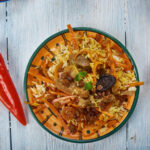
Kabuli Palaw or Qabili Pulao
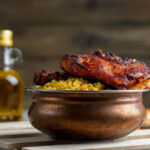
Roz Bukhari
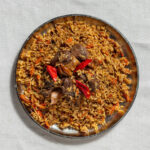
Armenian Pilaf
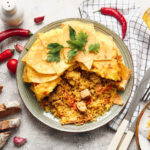
Azerbaijani Plov
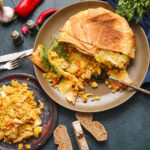
Shah Pilaf

Shirin Plov
Pilaf: Ingredients and Preparation
Main Ingredients
Main Cooking Method
Preparation Process
Pilaf: A Deep Dive
Cultural Significance
Taste
Texture
Aroma
Color
Serving Style
Serving Temperature
Accompaniment
Occasions
Seasons
Special Diets
Calories
Popularity
Popular Similar Dishes
- Nasi Kebuli
- Fried Ice
- Nasi Lemak
- Nasi Goreng
- Paella
- Biryani
Popular Dining Area
Pilaf is an ancient dish where rice is simmered in stock or broth, with spices, vegetables, meat, or dried food included in the mix. Originating from India, the rice dish spread all the way to Spain during the Abbasid Caliphate era.
Today, it’s a traditional dish in Middle Eastern, Balkan, Caribbean, and Central Asian cuisines. From Afghanistan to Uzbekistan, pilaf is a beloved staple.
Typically, the rice grains for pilaf are basmati or long grains, so the final product should have a plump, firm, and separate texture. To give it a rich hue, saffron is added, turning the rice a golden yellow.
The preparation often starts with stir-frying the rice in hot fat. However, some versions even involve steaming the rice after an initial boil.
Usually, each country has its own way of interpreting pilaf using available ingredients, leading to thousands of variations.
To get to know about pilaf, you should take advantage of the information regarding different types of pilaf, rice, grains, ingredients, and side dishes used to enjoy the rice dish. Afterward, discover the features of pilaf that set it apart from risotto and biryani.
Plus, the pros and cons, along with the answers to popular concerns relating to pilaf and similar specialties, are great to check out.
Key Points
Pilaf Images
How to Make Pilaf?
To make pilaf, the general aim is to bring a light, fluffy, and separate texture into whatever grains you choose. Ideally, the process starts with rinsing the grains to remove any starch before cooking them in your choice of stock or water.
Add this stage, aromatic spices and herbs are also added to infuse a fragrant profile. Alternatively, some will stir-fry the grains briefly in hot fat before cooking them in liquid. Different cultures and regions will have numerous adaptations to pilaf after cooking the rice.
What Are The Different Types of Pilaf?
Although the concept of pilaf is rather simple, combining grain varieties with other ingredients to create the dish, there are many versions of this rice creation in different regions:
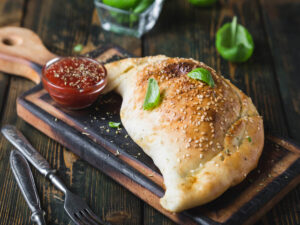
Calzone

Kabuli Palaw or Qabili Pulao
Considered a national dish of Afghanistan. Served with side dishes or part of a banquet
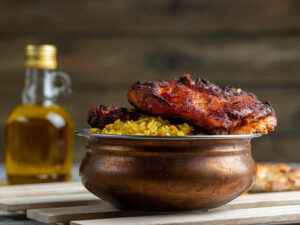
Roz Bukhari
Enjoyed in the Gulf States of the Arabian Peninsula alongside salata hara (a type of spicy tomato sauce). Usually use long grain rice for cooking
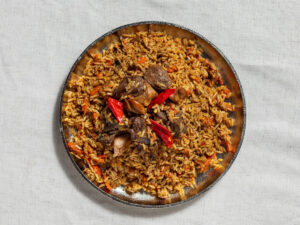
Armenian Pilaf
The pilaf is cooked in a red color fat result from cooking mixing with red pepper

Azerbaijani Plov
Consists of 3 elements, rice, gara, and herbs

Shah Pilaf
A traditional rice meal of Azerbaijan that mixes various ingredients
It has a thin layer of lavash flatbread at the bottom of the pot
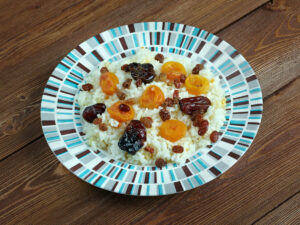
Shirin Plov
Created in Baku capital, the dish comes with layers of rice
It has many seasonal dried fruits as toppings
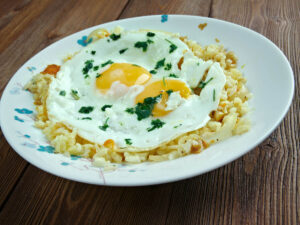
Sheshryanch Plov
Known as six color plov, it is served with a sunny side up egg on top
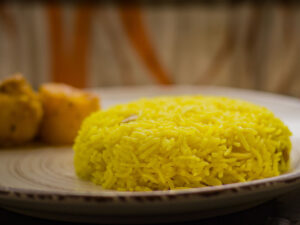
Bengali Polao
Seen as a ceremonial food. Often garnished with fried onion (beresta) on top
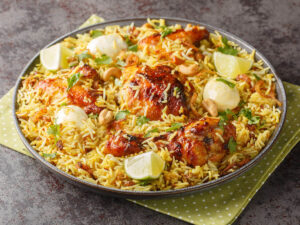
Chicken Pulao
A ceremonial dish among the Bangladeshi Muslim population
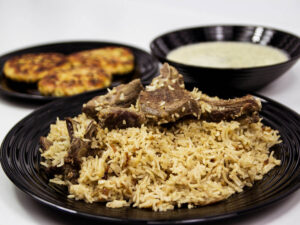
Akhni Pulao
A ceremonial specialty of the Sylhet and Chittagong
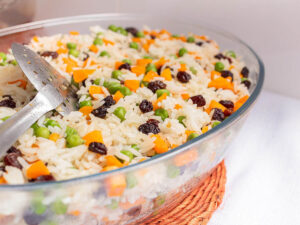
Arroz Pilau
A Brazilian version of pilaf.

Arroz de Frango Desfiado
Translated to shredded chicken rice
Arroz Suprême de Frango
Translated to chicken supreme rice
The dish has chicken but not shredded and is served with suprême sauce
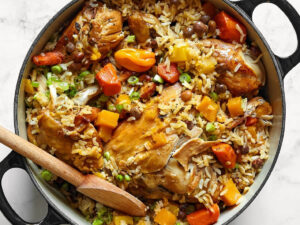
Pelau
A version of pilaf in Eastern Caribbean and other Caribbean regions

Trinidad and Tobago Pelau
A pilaf with layered rice, meat, and vegetables
The meat is often browned
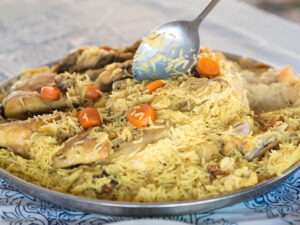
Osh Palov
A staple pilaf in Tajikistan, Uzbekistan, and Bukharan Jewish communities
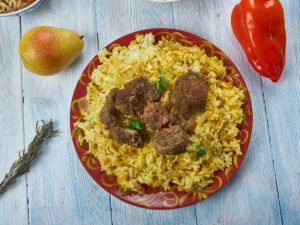
Uyghur Polu
One of the most popular dish in the Uyghur region
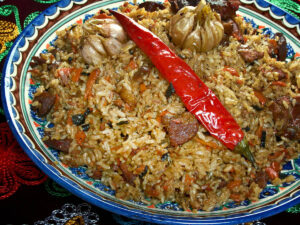
Tuy Palovi
A traditional rice dish of Uzbekistan, used for weddings and cooked by men all the time
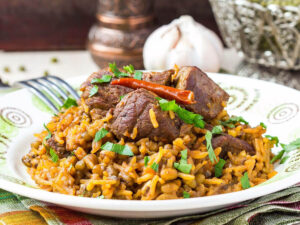
Kovurma Palov
A rice dish with meat being cut into pieces
The rice is cooked over low heat until it’s tender
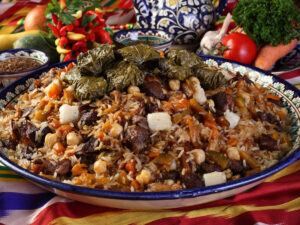
Kovatok Palov or Oshi Toki
A rice specialty made with grape leaves, ground meat, and vegetables
The grape leaves are used for wrapping around the filling before adding to the pilaf
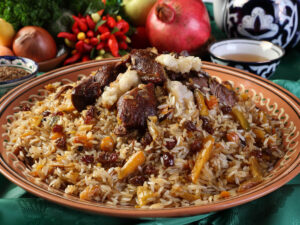
Mayizli Palov
A national rice dish of Uzbekistan
All ingredients are combined to cook until they become soft

Sarimsokli Palov
An Uzbek pilaf with garlic, browned onions, and carrot strips
The garlic is cooked and peeled in cloves for serving over the pilaf
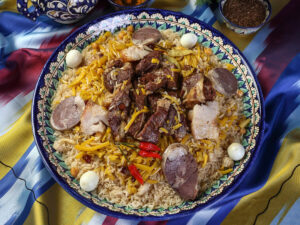
Sofakli Palov
A pilaf from the Samarkand region of Uzbekistan
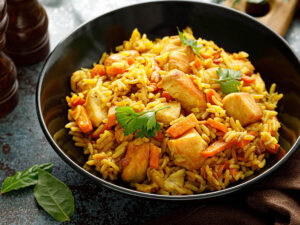
Tovukli Palov
A pilaf made by using chicken as the main ingredients
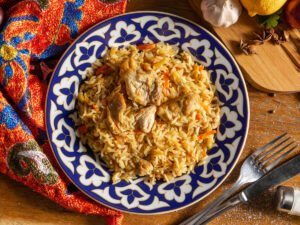
Ma’jun Palov
A pilaf of Uzbekistan that is made with carrot juice, chicken, and vegetables
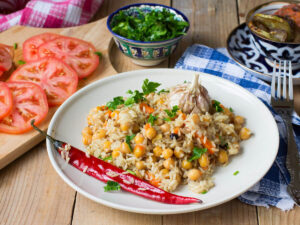
Nuhatli Palov
An Uzbek pilaf made with chickpeas, vegetables, and meat

Pomidor Quymoqli Palov
An Uzbek pilaf for weddings and festivals combining extra ingredients like eggs and tomatoes
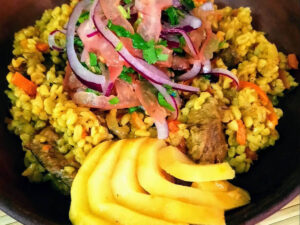
Behili Palov
A pilaf made with the addition of quince for extra aromatic
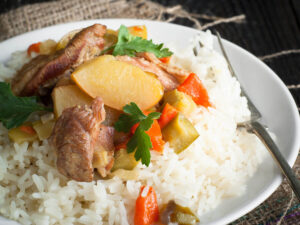
Olma Palov
A pilaf of Uzbekistan with apple pieces

Ju’hori Palov
A pilaf made by combining meat with corn and bell pepper
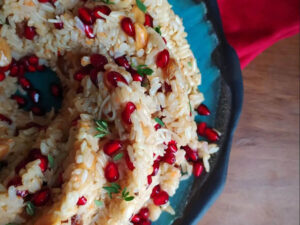
Piláfi
A fluffy and and soft pilaf of Greek
The Northern region cooks pilaf in an oven
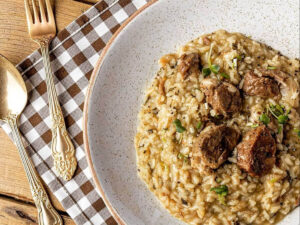
Gamopílafo
A Greek pilaf, known as “wedding pilaf” made for weddings and celebrations
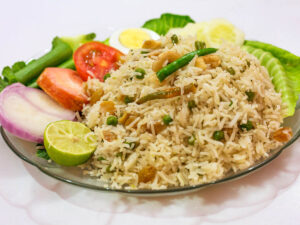
Bengali-style Pulao
Made using vegetarian ingredients
Hazar Pasand
Translated to “a thousand delights”
Served on special occasions and weddings
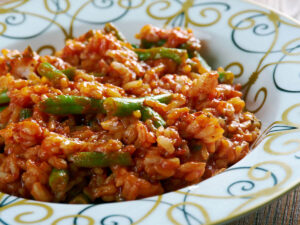
Lubia Polo
A Persian (today’s Iran) rice layered with green beans

Bannu Beef Pulao or Bannu Gosht Pulao
A specialty of the Bannu district from the Khyber Pakhtunkhwa province of Pakistan
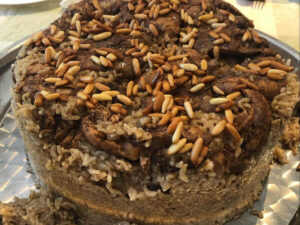
Maqlubeh
Maqlubeh is known in the Eastern Mediterranean regions
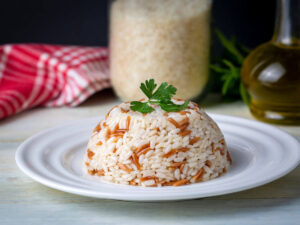
Pirinç Pilaf
A common pilaf version of Turkey

Arpa Şehriye (orzo) Pilaf
A Turkish pilaf with orzo as the main ingredient
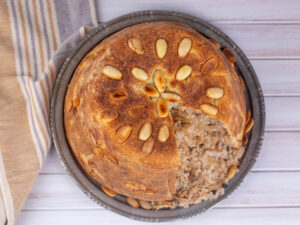
Perdeli Pilav
A pilaf specialty coming from the Siirt region of Turkey

Etli Pilav
Etli pilav is served upside down on a tray with the rice at the bottom after being flipped
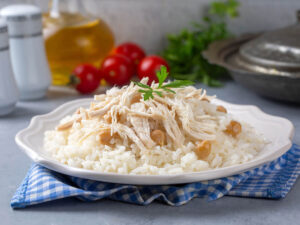
Nohutlu Pilav
A Turkish pilaf combining chickpeas and chicken served with white rice
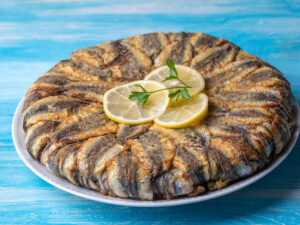
Hamsili Pilav
A baked pilaf specialty of the Black Sea, with the rice encased in anchovies
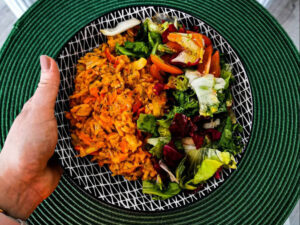
Plovas, Plovs, or Plow
Each plovas in Lithuania uses different ingredients
Aside from the add-on ingredients, the rice and grains used to make pilaf are an essential part of creating the various textures of this rice dish.
What Rice and Grains Are Used to Make Pilaf?
Rice is a crucial part of making pilaf; however, other types of grains are also fit for making the rice dish. Here are just 3 common grains often employed for cooking pilaf:
- Rice: The most common grain used for pilaf. Any variant of Asian rice (both Indica and Japonica varieties), African rice, basmati, Greek rice, brown rice, long grain rice, or wild rice, whether glutinous or non-glutinous, is a perfect fit for making pilaf. Rice for cooking pilaf can be whole grain or milled
- Bulgur: A cracked wheat foodstuff found in West Asian cuisine. Bulgur does not require cooking; soaking in water is all needed. It’s used in various dishes, including pilafs.
- Wheat: Some regions use wheat instead of rice to make pilaf. Most often, bulgur is parboiled and cracked.
Remember, with rice or grains as a base for pilaf, people in different regions will add various elements to elevate the flavors further down the cooking process.
What Other Ingredients Are Often Added to Pilaf?
While pilaf consists mainly of rice, the added ingredients are essential in flavoring the dish and elevating the overall experience. These are 7 elements that often appear in a pilaf specialty:
- Meat: Various types of meat are employed, such as chicken, beef, goat, lamb, prawn, or fish.
- Vegetables: Depending on the regional variation, vegetables like carrots, peas, bell peppers, and onions are required in pilaf.
- Dried fruits: Raisins, apricots, and other dried fruits are included for sweetness and texture.
- Nuts: Almonds, pistachios, and other nuts are sometimes thrown in for garnishing and added crunch.
- Spices: Spices play a crucial role in pilaf. Common spices include cumin, cardamom, cloves, bay leaves, and saffron.
- Stock or broth: The rice in pilaf is often cooked in a flavorful stock or broth, which comes from vegetables, chicken, beef, or any other type.
- Other ingredients: Depending on the regional and personal variations, other local ingredients like eggs and potatoes also join the mix.
Once a pilaf is prepared and cooked, locals often serve the rice specialty with many other delights to bring more enjoyment to the table in terms of flavors and texture.
What Dishes to Serve with Pilaf?
Pilaf is a versatile dish that pairs well with a variety of accompaniments. Here are 10 dishes that go well with pilaf.
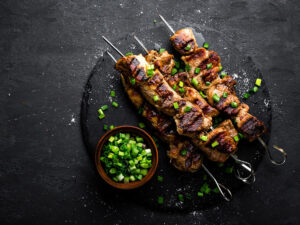
Meat dishes:
Pilaf accompanies various meat dishes, such as grilled or roasted chicken, beef, lamb, or fish. For instance, Afghanistan pilaf is often paired with meat dishes.
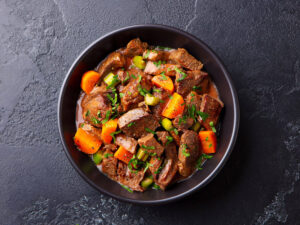
Stews:
Rich and hearty stews made with meat, vegetables, and legumes greatly complement the flavors of pilaf.
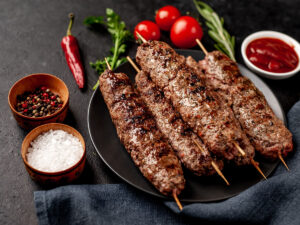
Kebabs:
Grilled skewers of meat or vegetables are a popular choice to serve alongside pilaf, especially in Middle Eastern and Central Asian cuisines.

Salads:
Fresh salads with vegetables, herbs, and a tangy dressing provide a refreshing contrast to the warm and hearty pilaf.

Yogurt-based dishes
Dishes like raita (Indian Yogurt Condiment) or tzatziki (Greek Cucumber Yogurt Sauce), which are yogurt-based, provide a cooling effect and complement the spices in pilaf.
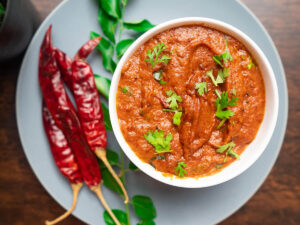
Pickles and chutneys:
These condiments add a tangy and spicy kick to the meal, enhancing the flavors of pilaf.
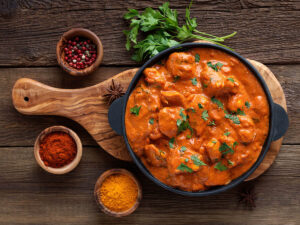
Curries:
In South Asian cuisines, pilaf is often served with a variety of curries, both vegetarian and non-vegetarian.

Vegetable sides:
Sautéed or roasted vegetables make for a great addition to a pilaf meal, providing added nutrition and flavor.
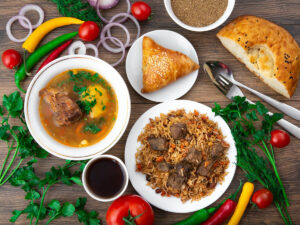
Soups:
Light broths or hearty soups are great as a starter or side dish with pilaf.
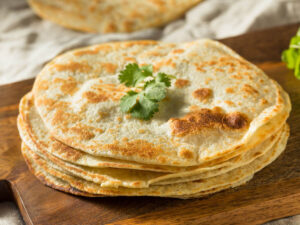
Bread:
Flatbreads like naan, pita, or lavash are perfect for serving alongside pilaf, especially if the pilaf is part of a larger spread of dishes.
Thanks to these various ranges of accompaniments, people have numerous ways of enjoying pilaf worldwide.
How Do People Enjoy Pilaf in Different Countries?
Pilaf is super versatile to adapt to any cooking culture. For that, there are thousands of ways for people to savor these gastronomic rice creations. Here are just 22 of the common ways that locals often have pilaf in their home countries:
| Country/Region | Pilaf Description |
|---|---|
| Afghanistan | Known for kabuli pulao made with steamed rice, caramelized carrots, raisins, and marinated lamb. Often garnished with almonds and pistachios. |
| Armenia | Pilaf is made with bulgur or rice, often served with meat. Flavored with spices and may include dried fruits or nuts. |
| Azerbaijan | Pilaf consists of over 40 recipes, with saffron being a popular ingredient in many. |
| Bangladesh | Pilaf (pulao) is made with fragrant rice, often paired with meat curries or lentil dishes. |
| Brazil | Variations like arroz pilau, inspired by pilaf, are found in some regions, though not traditionally Brazilian. |
| Greece | Pilaf is made with rice, flavored with lemon, herbs, and broth. A side dish with meat or fish. |
| India | Diverse pulao dishes are flavored with spices and often include vegetables or meat. |
| Iran | Pilaf (polow) is a staple with variations like green beans or cherries. Other versions include chelow, kateh, and damy. |
| Pakistan | Pilaf variety is flavored with spices, and often served with yogurt or meat dishes. |
| Levant | Pilaf is made with meat, tomatoes, potatoes, eggplants, fish, or cauliflower. Fish pilaf is known as Sayyadiyeh. |
| Turkey | Pilaf is often made with orzo, bulgur, and rice. Typically a side dish with kebabs or stews. |
| Lithuania | Plovas consists of rice and vegetables, with chicken and specific pork cuts being popular protein choices. |
| Kazakhstan | Pilaf is often served in communal events and has a hearty nature thanks to the seasoned broth used for cooking the rice. |
| Kyrgyzstan | Kyrgyz versions of pilaf are often inspired by neighboring countries and often featured in family gatherings. |
| Tajikistan | Osh palav or pilaf is a version of this rice dish in Tajikistan for enjoying with bread and tea. |
| Turkmenistan | In Turkmenistan, pilaf is a popular meal accompanied by various spice blends and dried fruits. |
| Uzbekistan | Uzbek plov is one of the most popular versions in Central Asia, it’s often cooked in a kazan (cast iron pot) for serving in communal gatherings. |
| Cypriot | Pilaf in Cypriot is made by combining bulgur wheat with vermicelli and onion for serving as a side dish. |
| Israel | The rice dish is made by combining rice with spices usually influenced by Jewish communities. |
| Fiji | Called pulao, the dish is influenced by the Indian population in the region with lamb or chicken used for making the dish. |
| France | In France, riz pilaf is a version of this dish made by cooking rice with onions and garlic |
| Kurdish Ethnic | Kurdish are ethnic people in Iran that features pilaf as a dish of cooked rice. vegetables , spices, and meat. |
Once you’ve savored the taste of pilaf, make sure not to overlook the features that decide if this rice dish is suitable for your consumption.
Pros and Cons of Eating Pilaf
Here are some simple features that perfectly capture the advantages and disadvantages of pilaf.
Pros
Cons
When you’ve made your choice to consume pilaf, feel free to combine whatever ingredients you have available. Additionally, I suggest taking a look at some of the differences between pilaf and risotto.
How Do Pilaf and Risotto Differ?
Here are 5 distinct features for you to distinguish between pilaf and risotto.

Pilaf
Origin: Middle East, Central Asia, Indian subcontinent
Cooking Method: Sautéed in oil or butter, then boiled in broth without stirring.
Ingredients: Meats, vegetables, dried fruits
Texture: Fluffy with separate grains
Serving: Side dish or main course
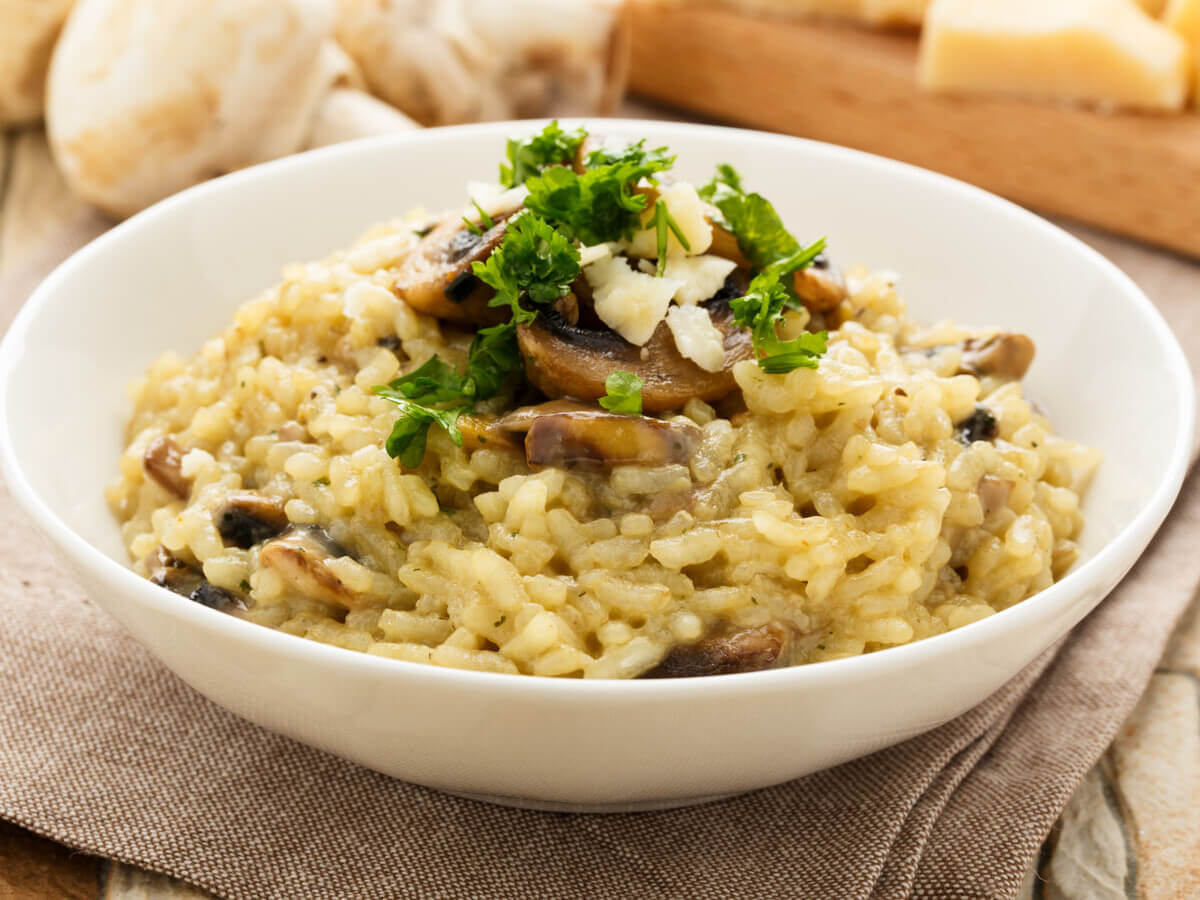
Risotto
Origin: Italy
Cooking Method: Sautéed in butter or oil, the liquid is added in increments with continuous stirring.
Ingredients: Wine, cheese (especially Parmesan), onions, and other ingredients like mushrooms or seafood
Texture: Creamy
Serving: First course in Italy, but is also served as a main dish
Now that you have known how to differentiate between pilaf and risotto, I suggest taking your time to learn about what features that set pilaf and biryani apart.
What Are The Differences Between Pilaf and Biryani?
To distinguish between pilaf and biryani, I have 7 features that make these two dishes easily recognizable.
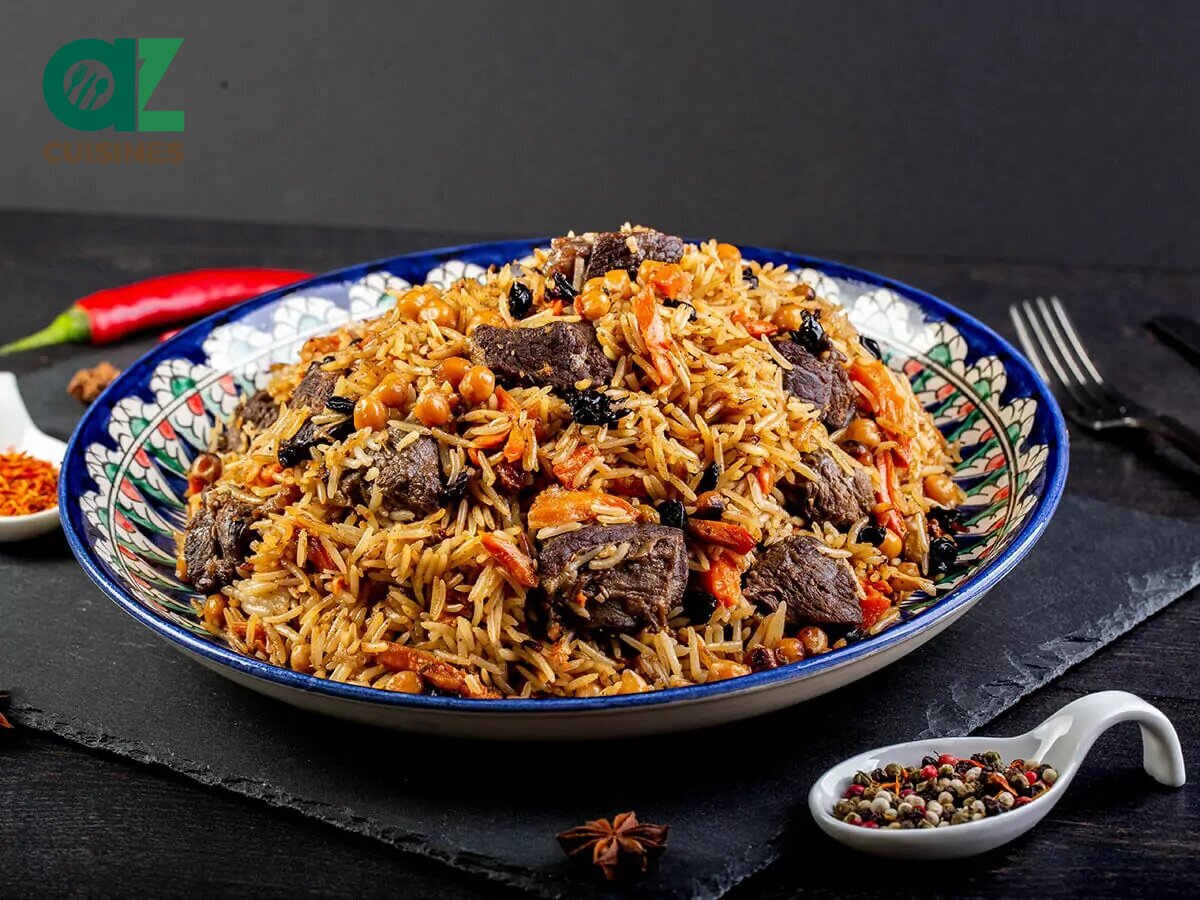
Pilaf
Origin: Middle East, Central Asia, Indian subcontinent
Cooking Method: Typically sautéed in oil or butter, then boiled in broth without much stirring.
Rice Type: Various types, including long-grain rice
Ingredients: Can include meats, vegetables, and dried fruits
Texture: Fluffy with separate grains
Layering: Not layered
Gravy Content: Typically less gravy
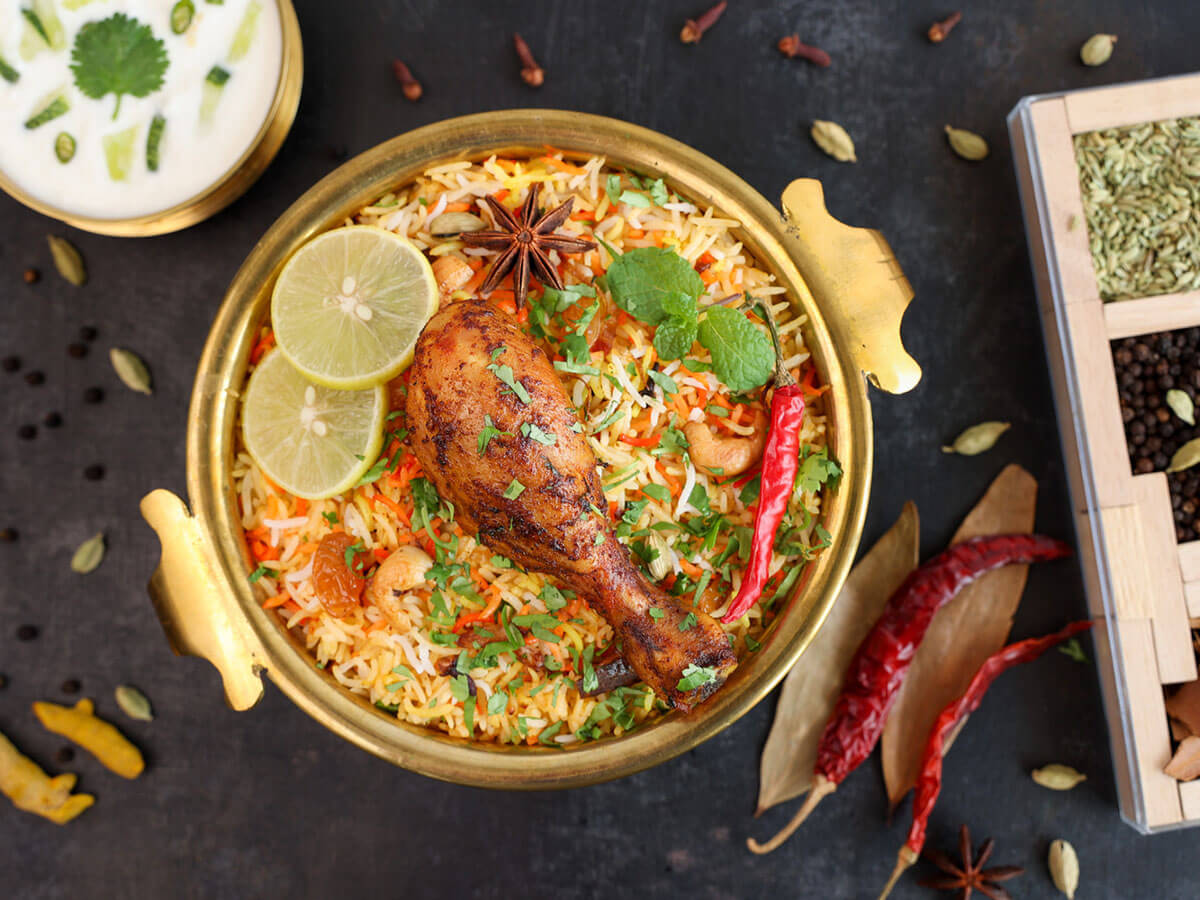
Biryani
Origin: South Asia, with influences from the Muslims of South Asia
Cooking Method: Layered dish, often with a layer of partially cooked rice, meat (or vegetables), and then another layer of rice. It’s then sealed and cooked.
Rice Type: Typically long-grain rice, especially Basmati
Ingredients: Spices, vegetables, rice, and meat (chicken, beef, goat, lamb, prawn, or fish). Sometimes it includes eggs and potatoes.
Texture: More moist and flavorful due to the layering and cooking process.
Layering: Distinct layers of rice and meat or vegetables
Gravy Content: Contains more gravy (or yakhni)
I’m glad that you’ve made it this far and know more about the interesting information about pilaf. With that said, you should spend some more time digging deeper into the common inquiries related to pilaf.



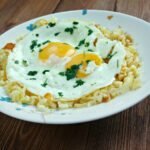

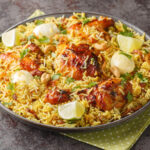

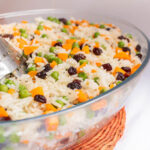
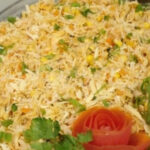
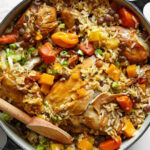
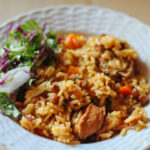
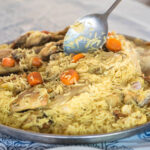
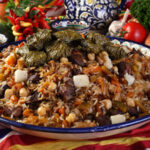
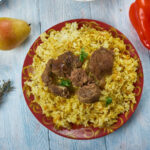
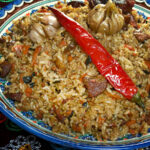
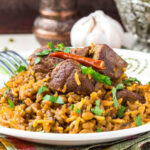

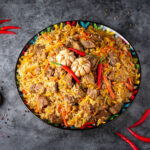
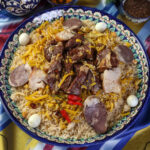


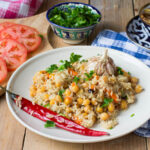
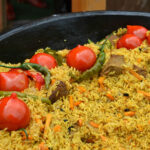

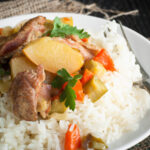
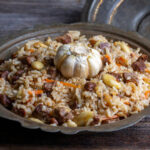
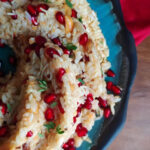
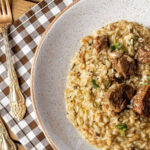
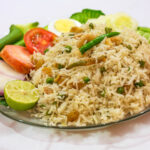
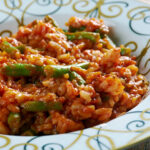


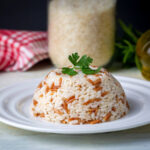
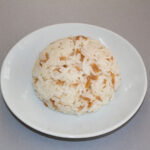

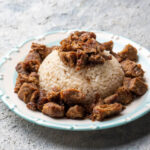
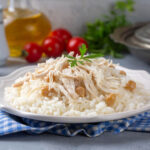

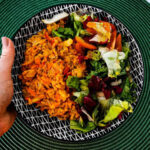
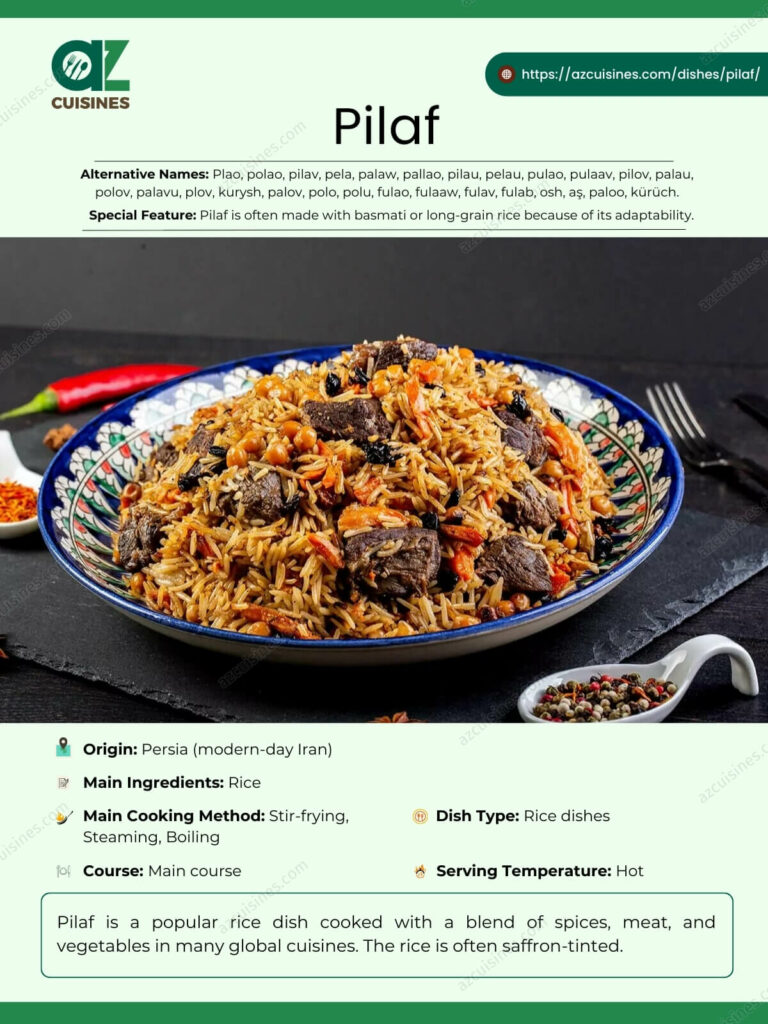
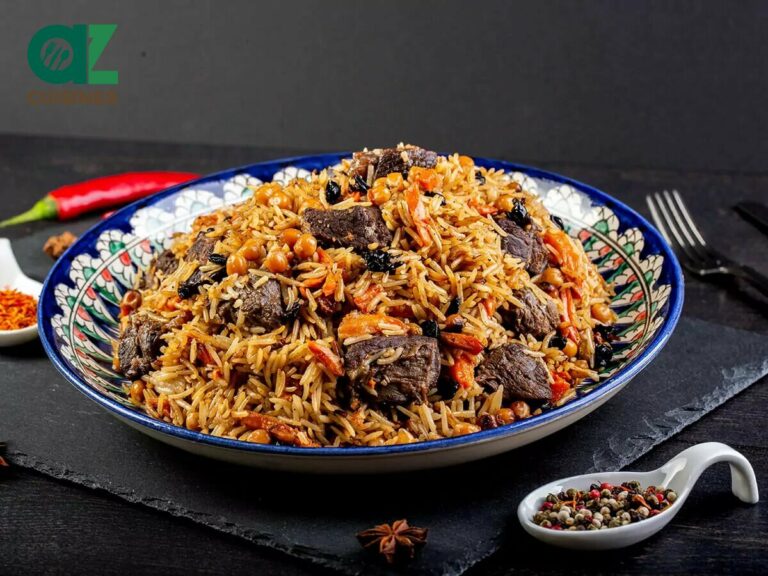
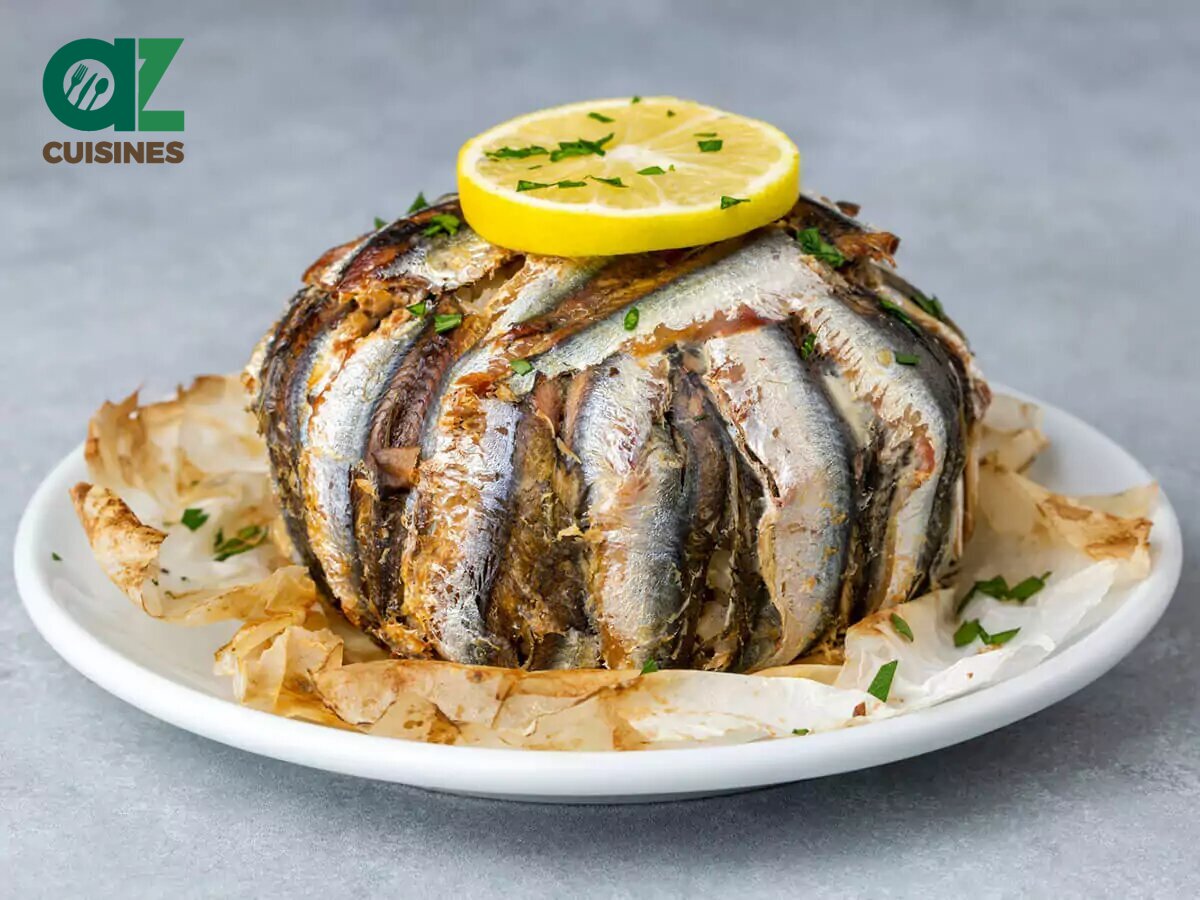
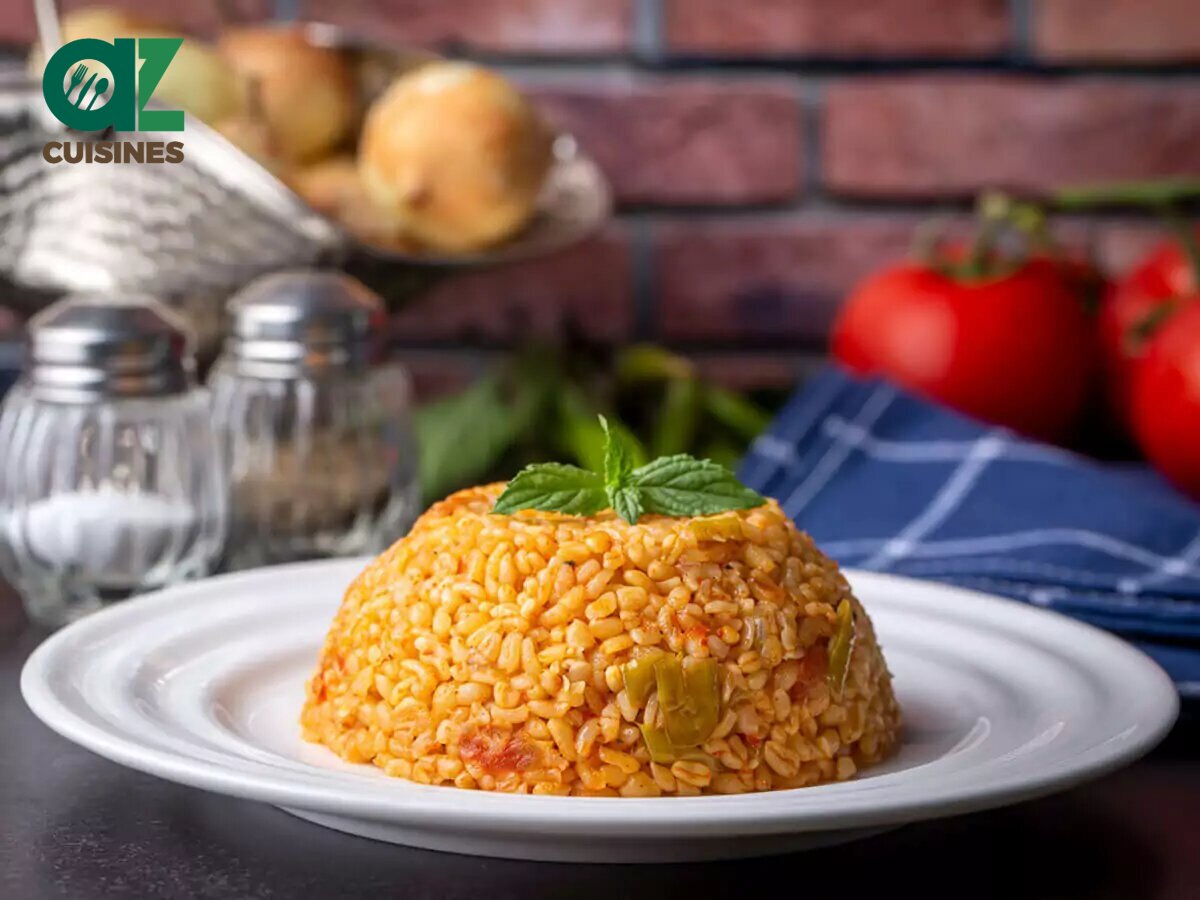
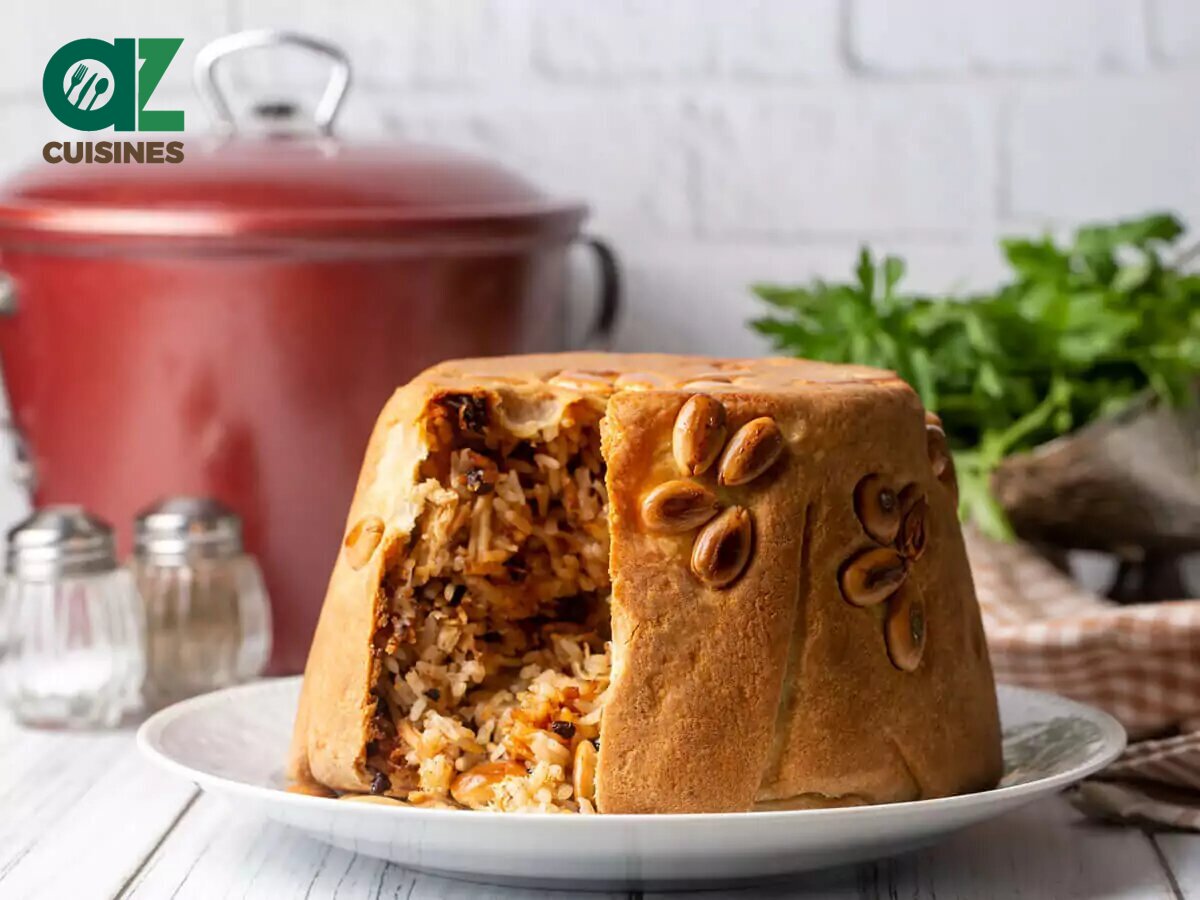
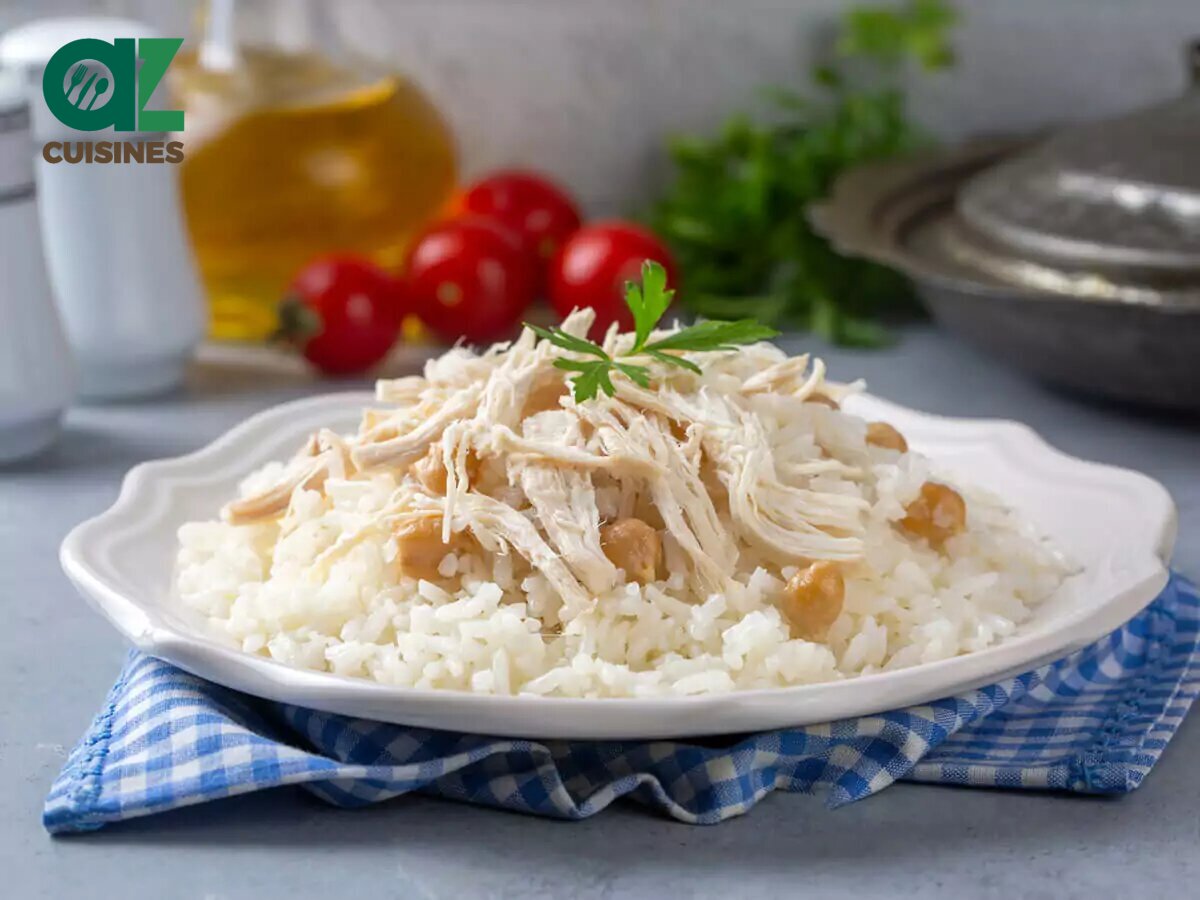
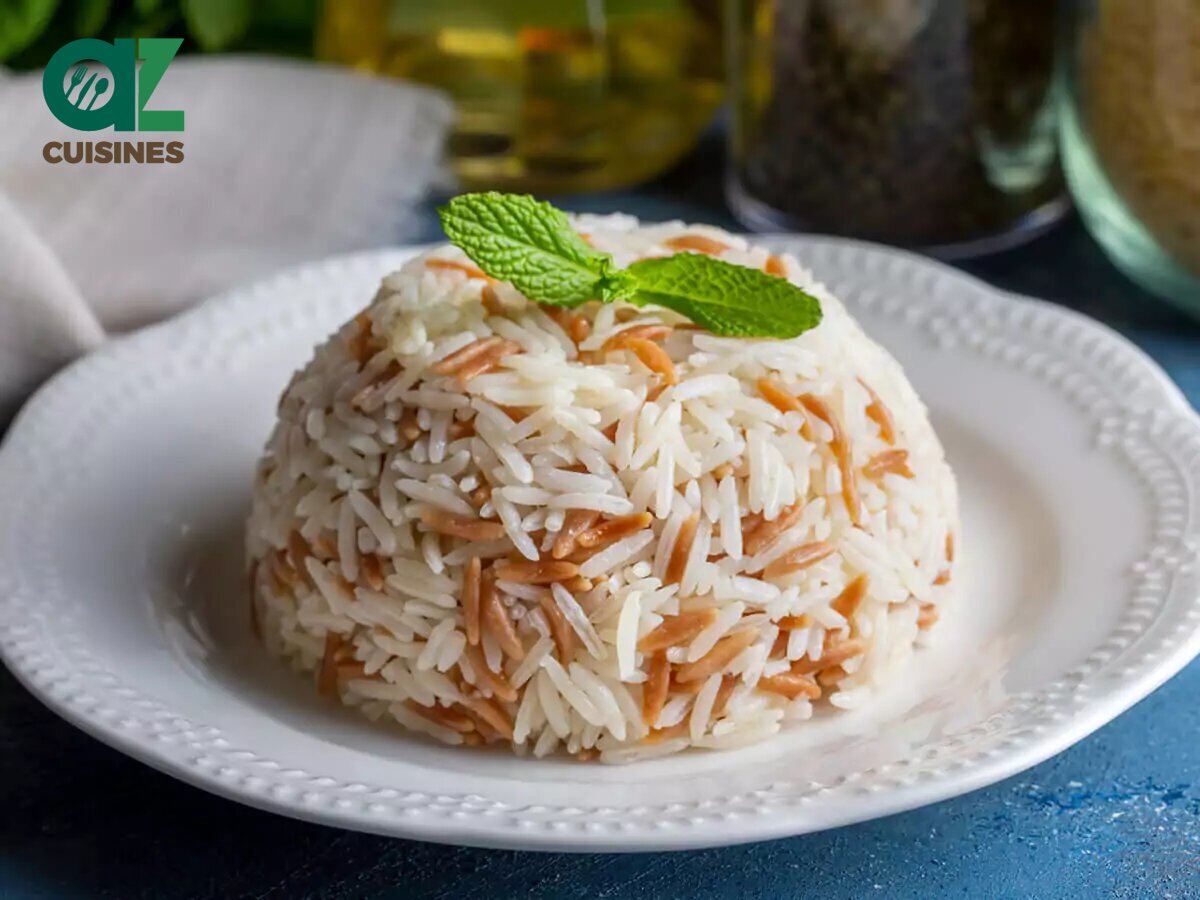
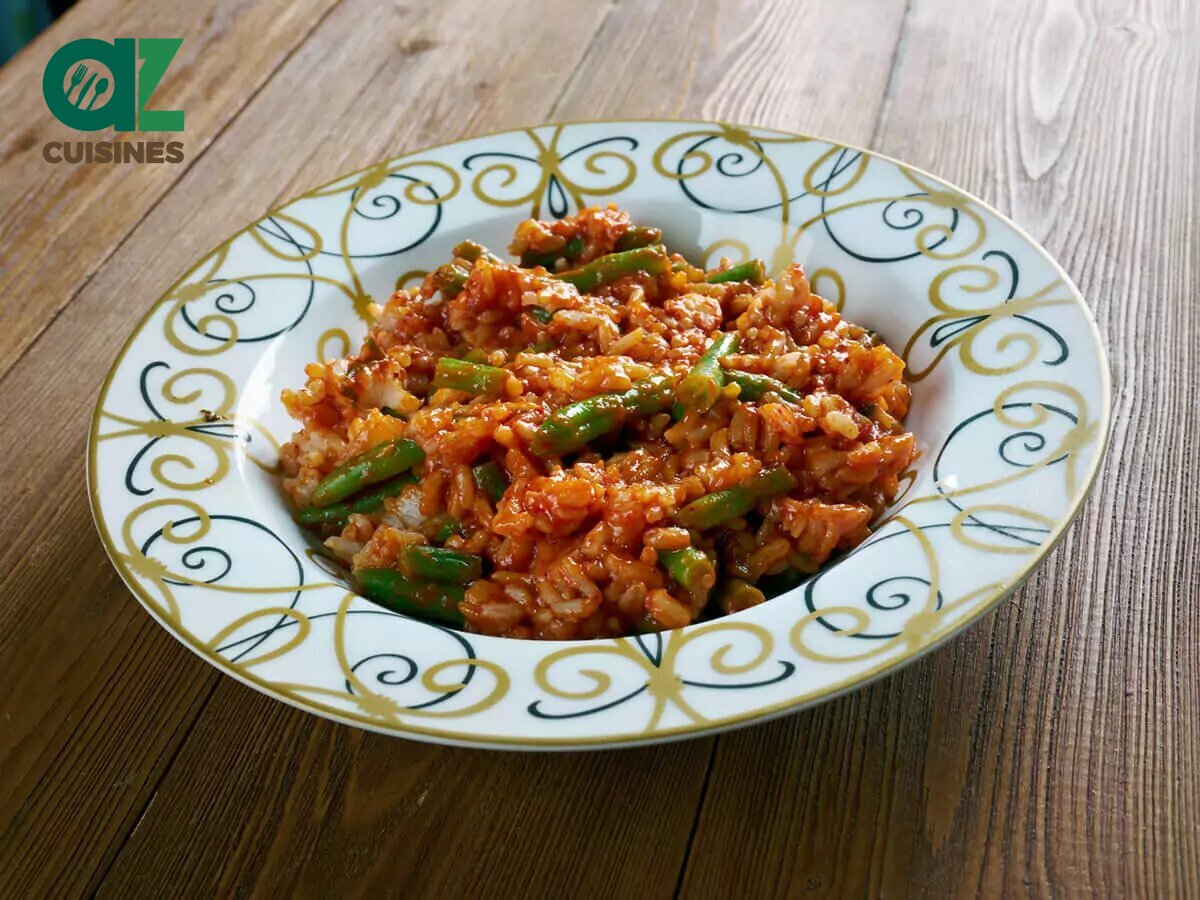
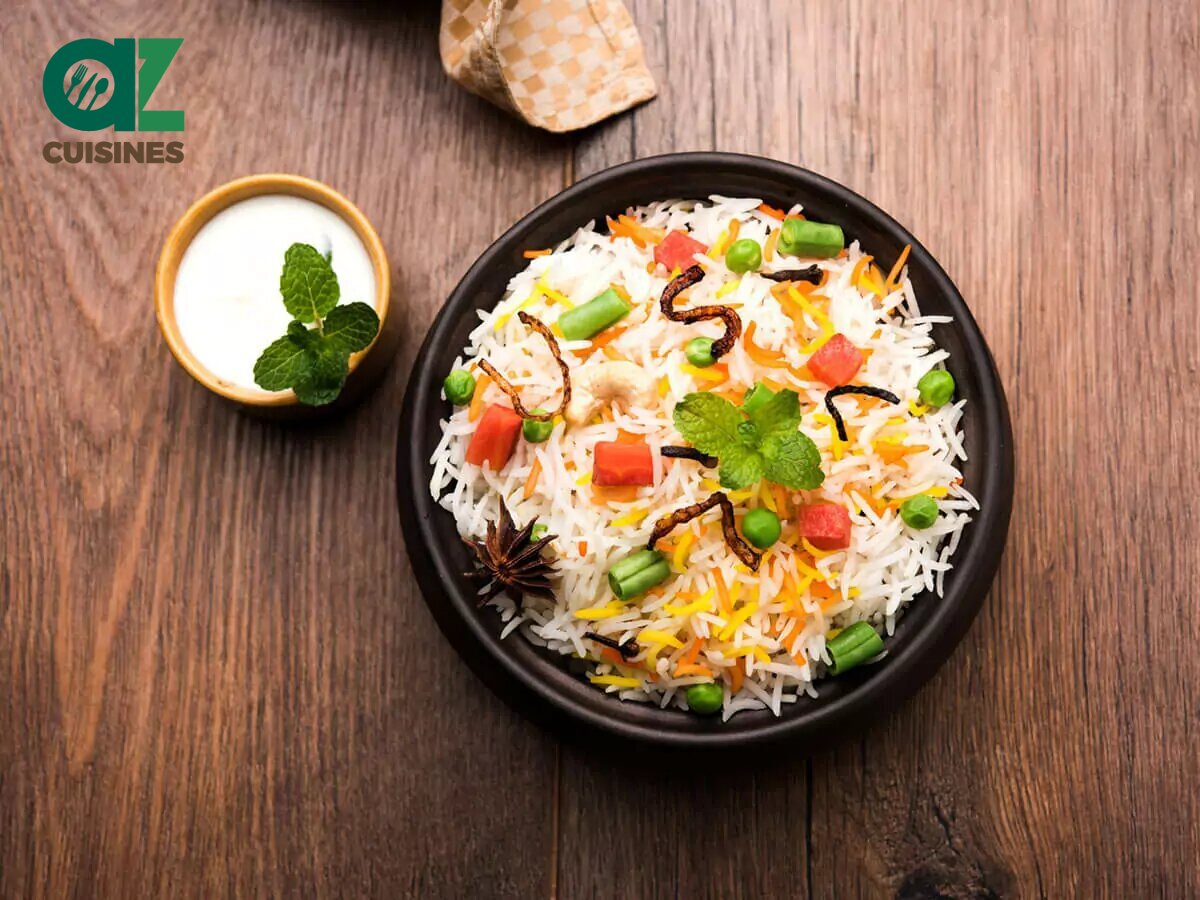
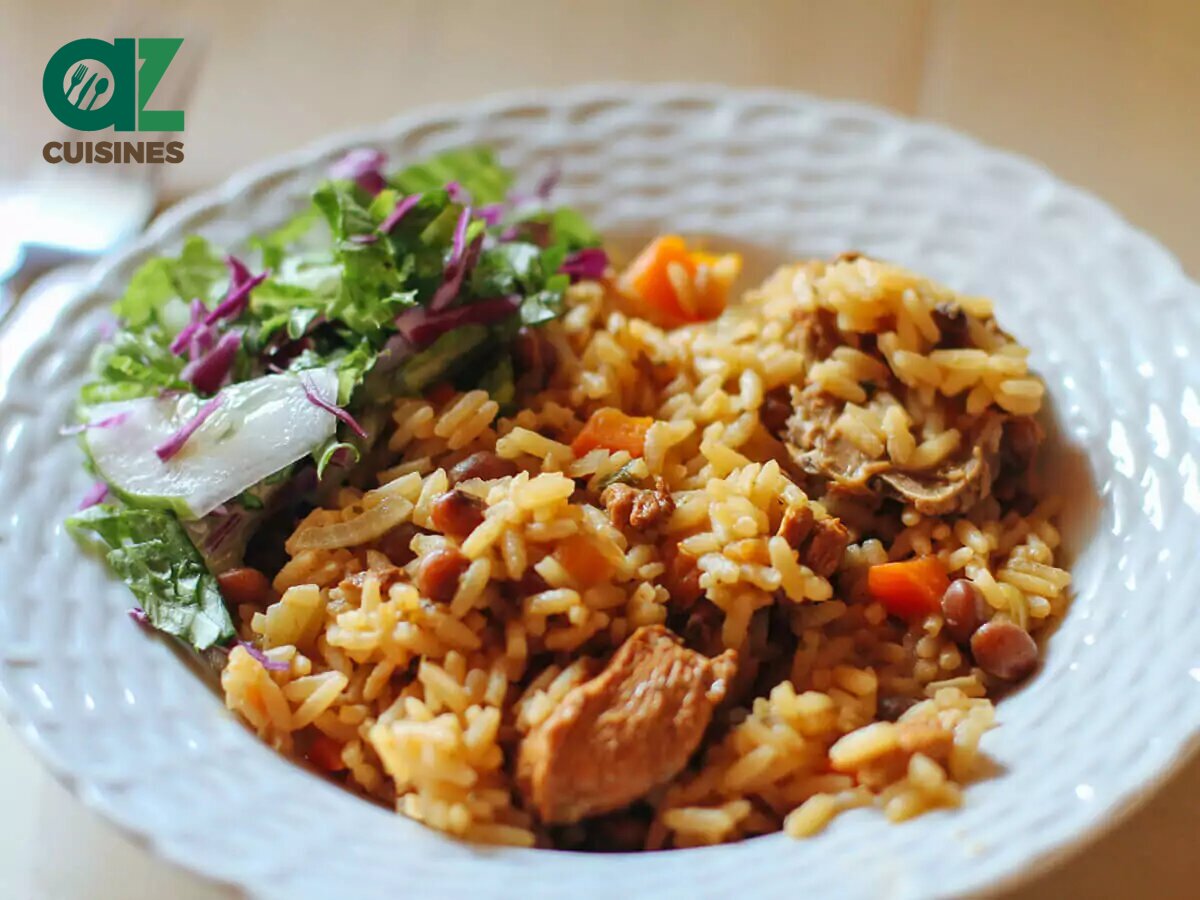
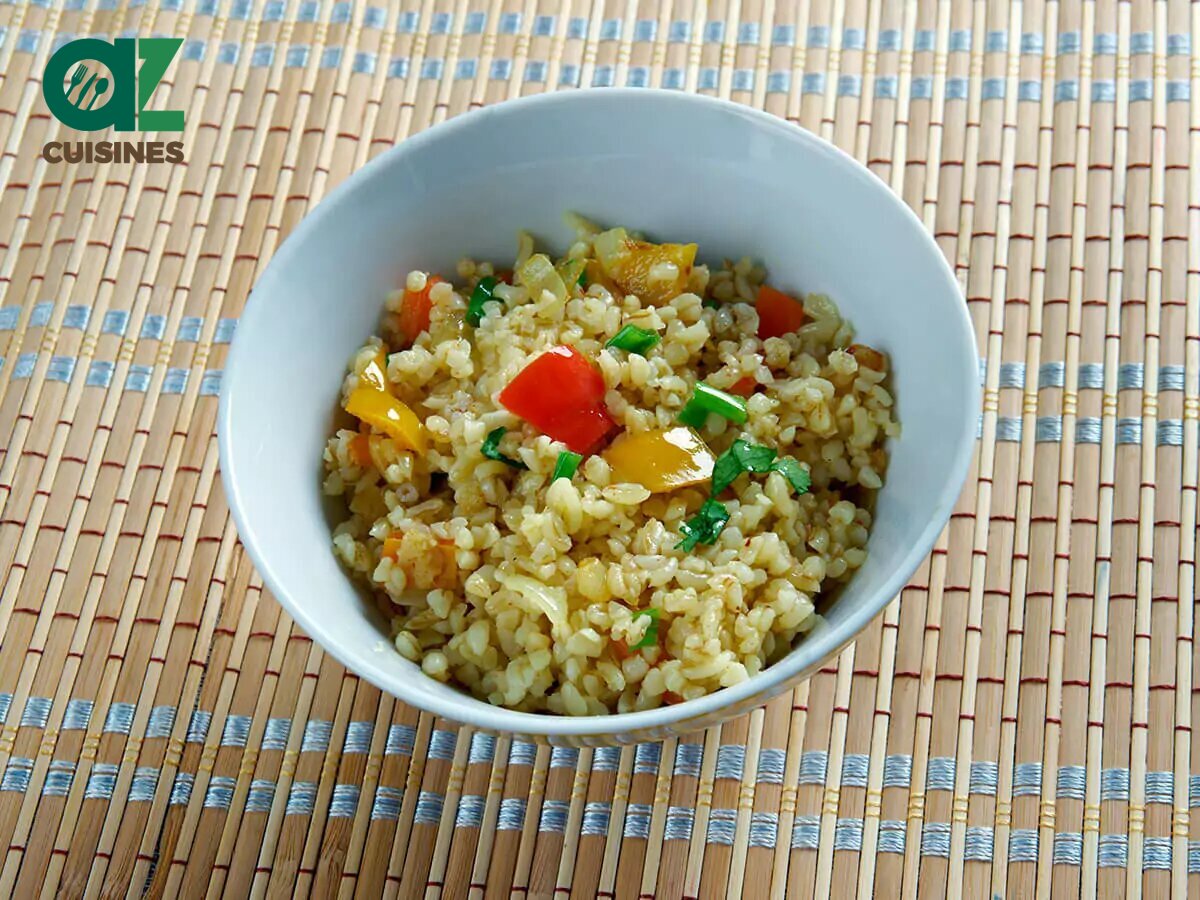

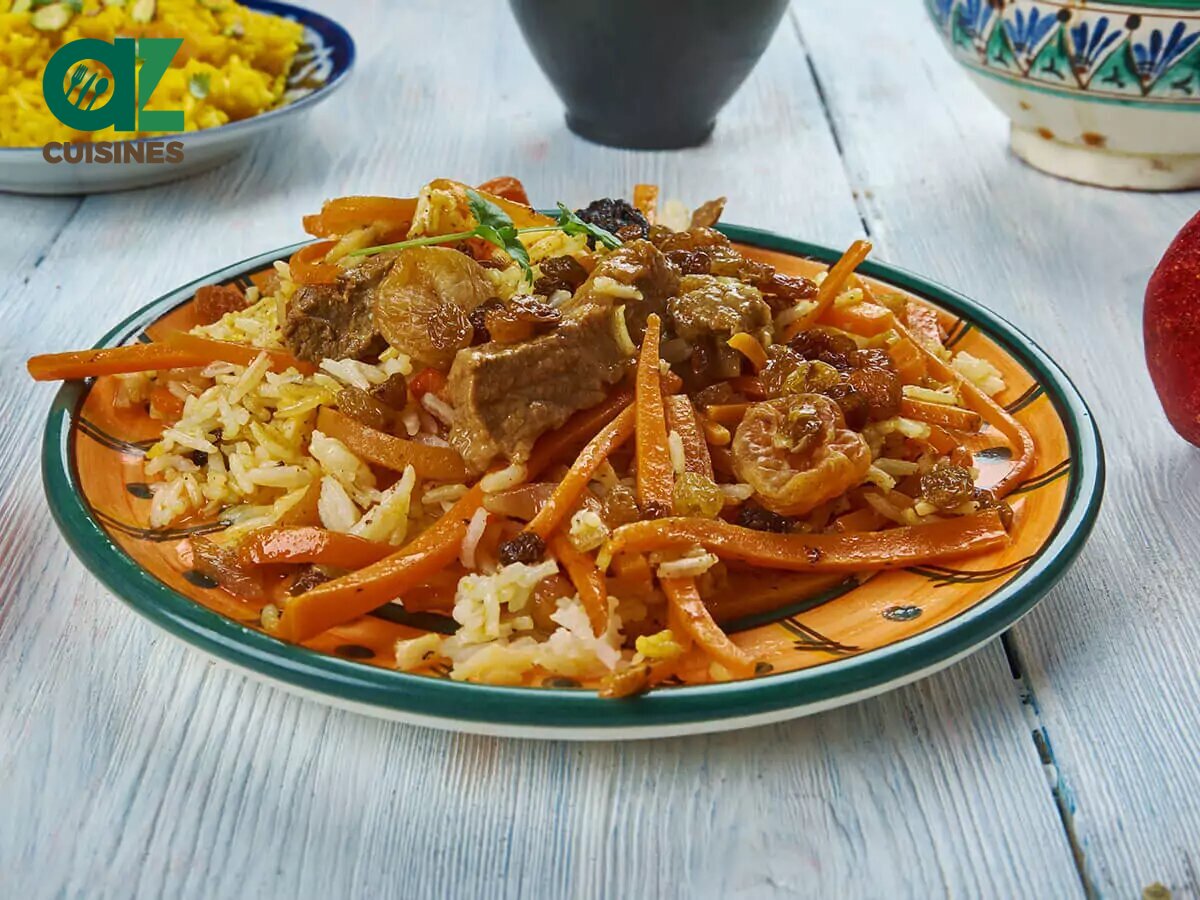
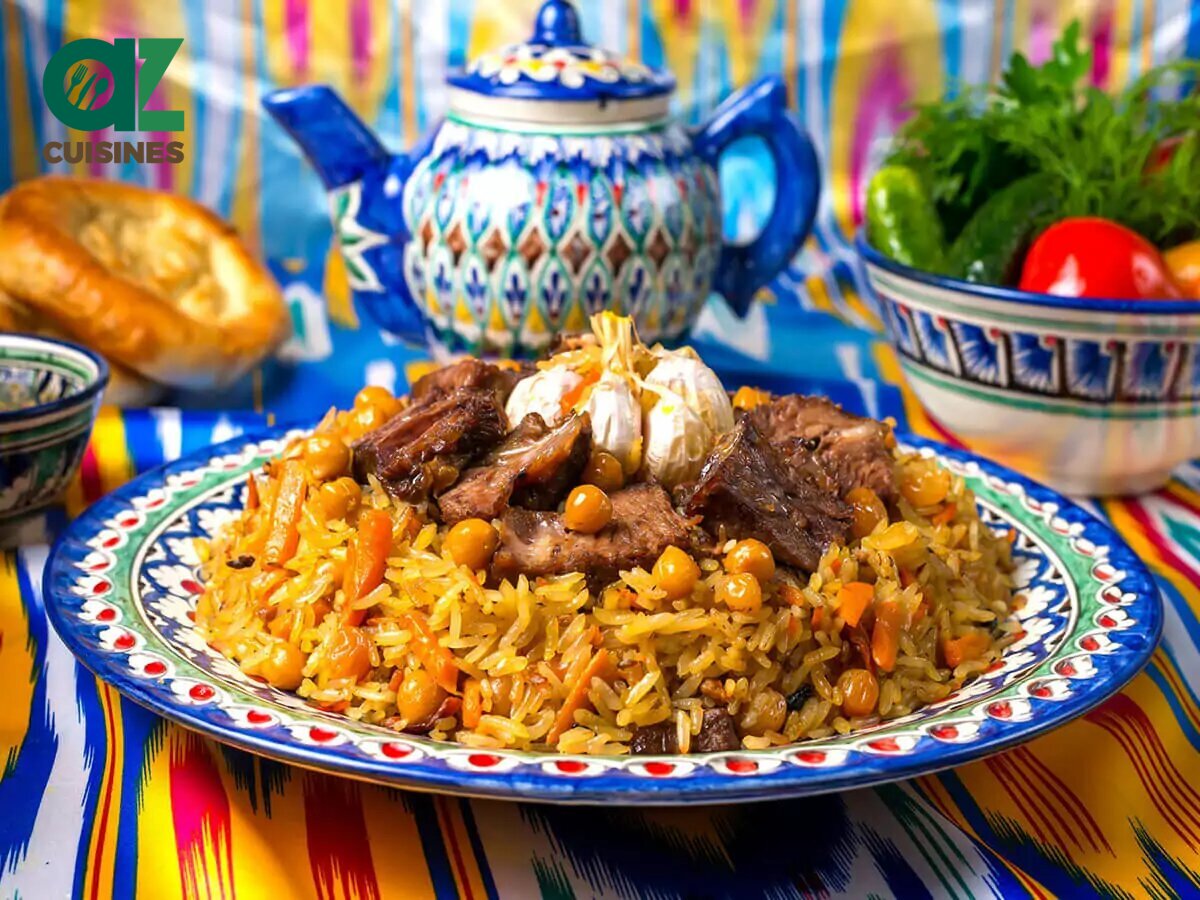
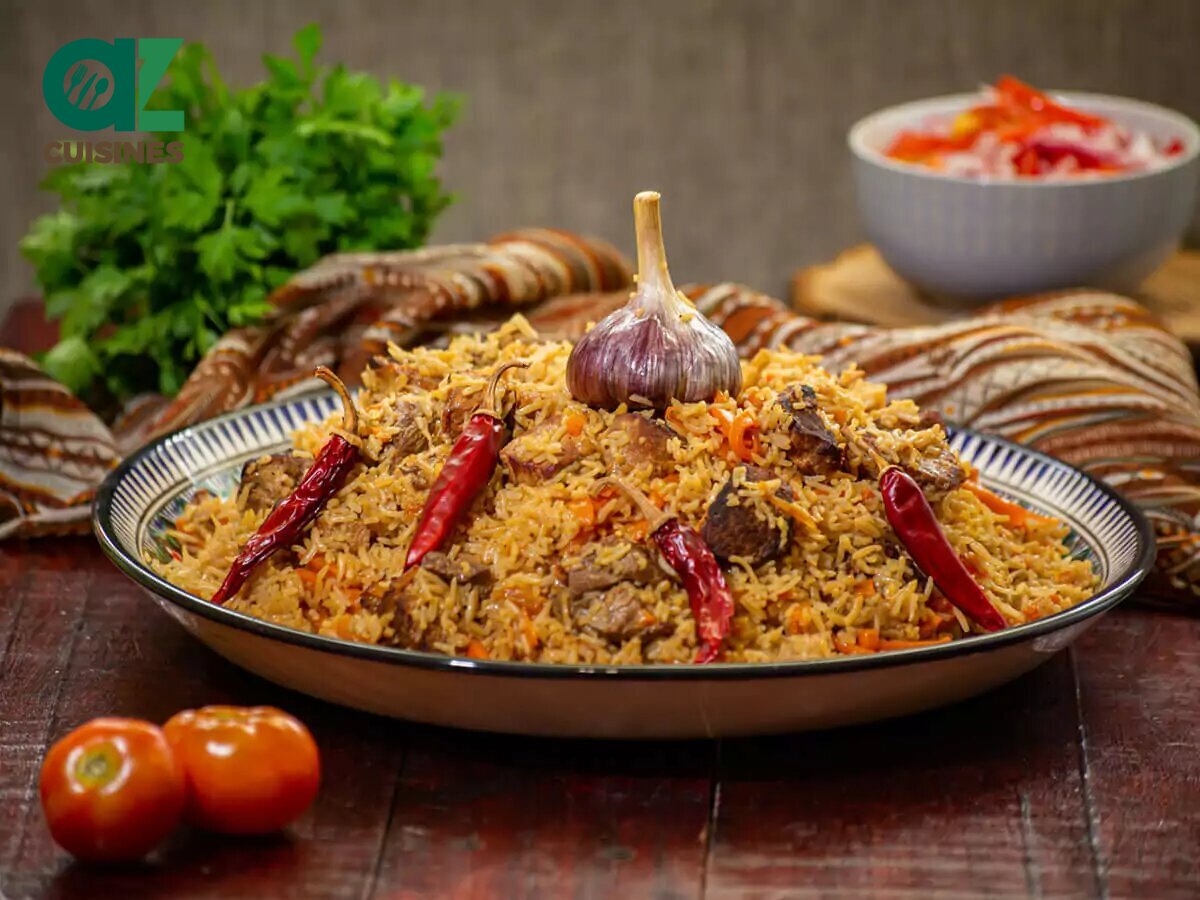
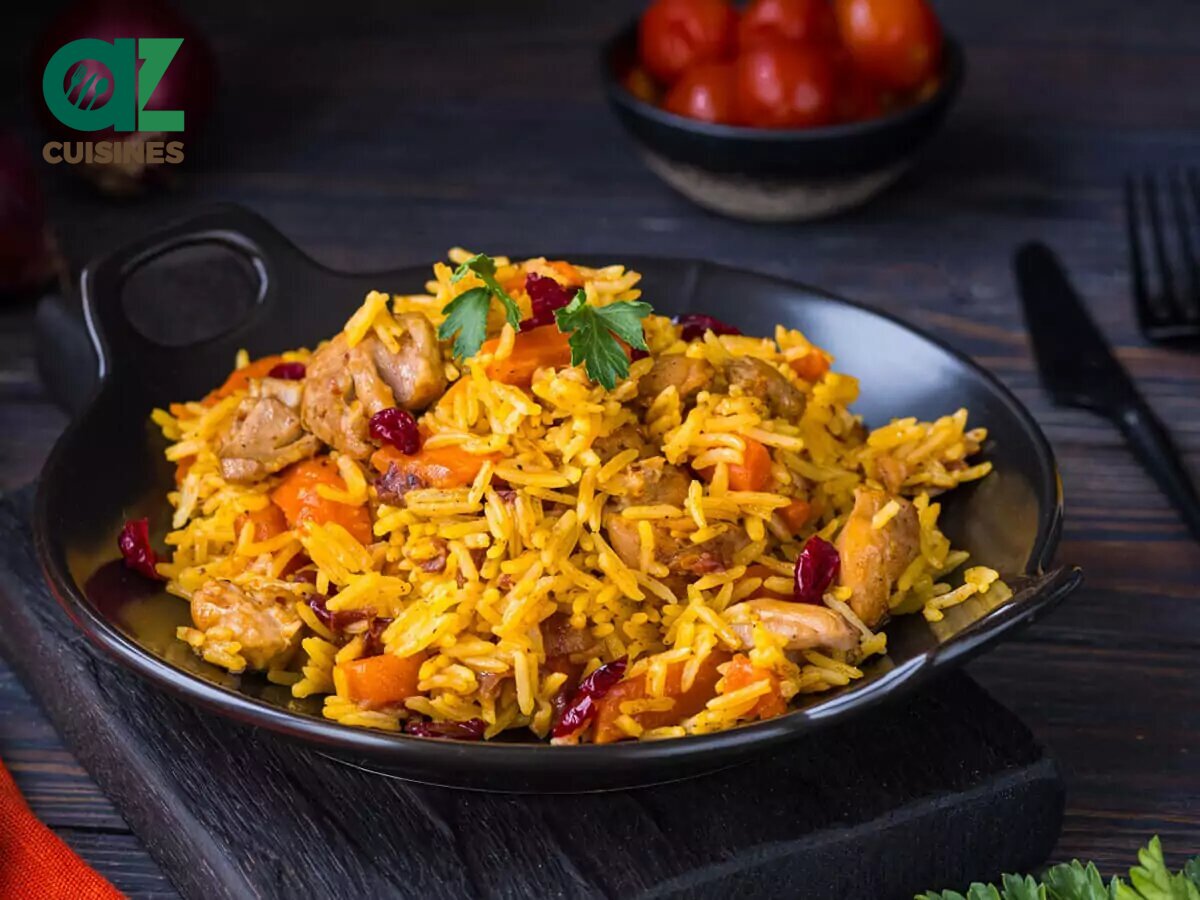
Adam Sam
Senior Food and Drink Editor
Expertise
Food Writer & Recipe Developer, Recipe Tester, Bartender, Cooking-video Maker, Editor In Chief
Education
Adam Sam, an experienced food writer and recipe developer, is passionate about blending diverse culinary traditions, national dishes, and innovative beverages, showcasing his proficiency in both traditional and modern recipe testing.
As the Editor-in-Chief, he elevates culinary content from street food to fine dining, focusing on Western cuisine and types of drinks at azcuisines.com, and is professional in creating engaging cooking videos that simplify complex dishes and ingredients.
His passion for food is evident in his writing, where he uniquely merges various cultures, traditions, and contemporary trends, skillfully combining classic recipes with modern cooking methods.